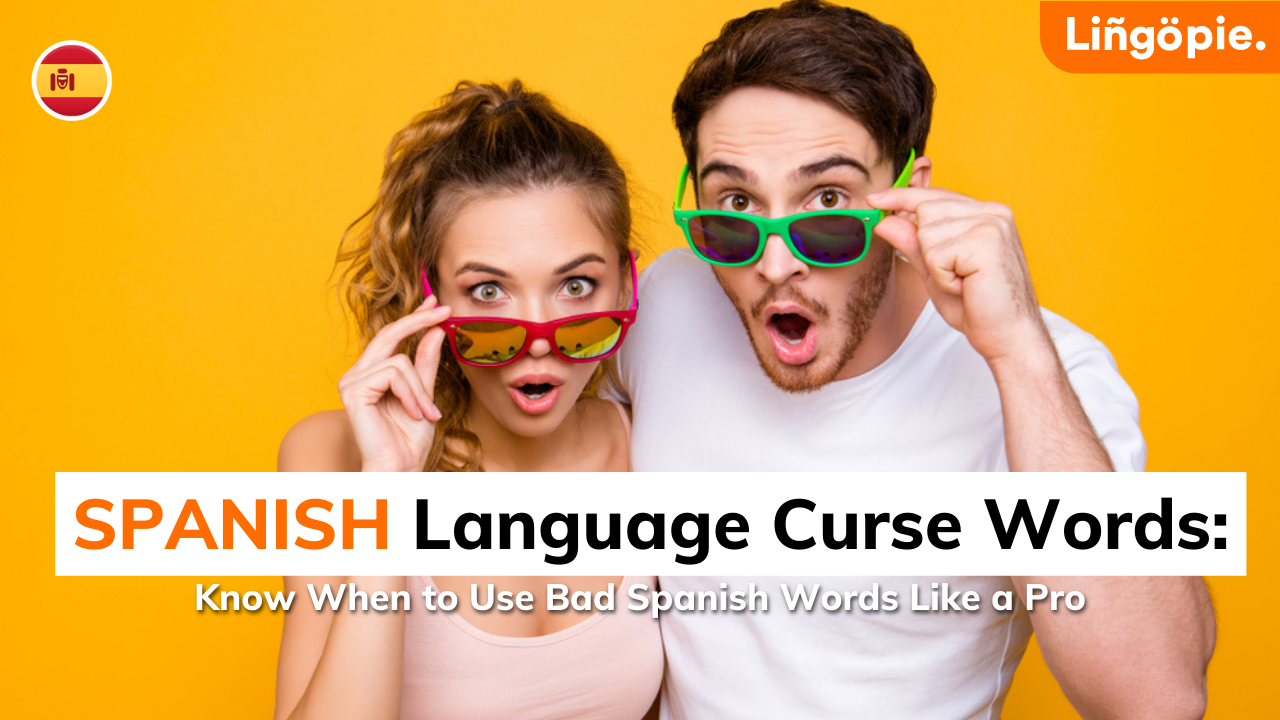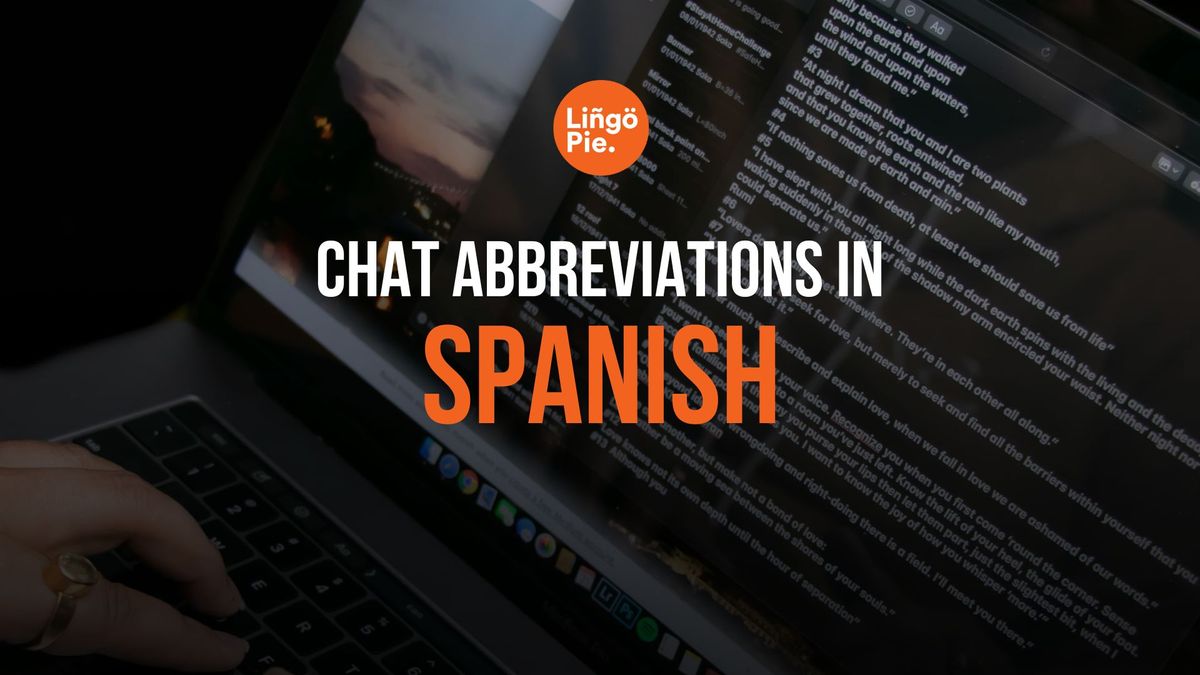Ever been in a WhatsApp group with Spanish speakers and felt completely lost? That was me last summer.
I'd moved to Madrid for work, feeling pretty good about my Spanish. Then my coworkers added me to the office chat. Suddenly, I was drowning in a sea of "TQM," "ALV," and "salu2." I had no clue what was going on.
Turns out, I'd stumbled into the world of Spanish chat abbreviations. These aren't just random letters - they're the building blocks of modern Spanish texting. And trust me, if you want to keep up with conversations, make friends, or even just order takeout without confusion, you need to know them.
It took me weeks of awkward conversations and missed jokes to finally catch on. But you don't have to go through that. I've put together a list of the most common abbreviations I wish I'd known from day one. Whether you're planning a trip, making Spanish-speaking friends online, or just curious about how language evolves, these will give you a serious edge.
Ready to decode the secret language of Spanish texting? Let's dive in.

Table of Contents:
Why Learn Spanish Chat Abbreviations
Learning Spanish chat abbreviations is not only a fun and engaging way to immerse oneself in the language but also a practical tool for modern communication. Today, these shorthand expressions bridge gaps and add vibrancy to digital conversations. They reflect the colloquial nuances and cultural idiosyncrasies of Spanish-speaking communities, providing non-native speakers with deeper insights and a more authentic connection.
For business professionals, travelers, or language enthusiasts, understanding these abbreviations can enhance real-time interactions, social connections, and virtual relationships. Moreover, being familiar with Spanish chat slang helps in following contemporary trends, engaging in casual dialogues, and embracing the lively and expressive nature of the Spanish language, which is spoken by millions across the globe. Whether for personal enrichment or professional advantage, these abbreviations are a valuable addition to one's linguistic repertoire.
Read also:


Popular Spanish Chat Abbreviations
Jajaja

Laughter is universal, but its expression can differ with language. In English, "LOL" (Laugh Out Loud) signifies a hearty laugh. In Spanish-speaking regions, this morphs into "jajaja." Interestingly, the more "j"s you add, the more robust the laughter becomes, like "jajajaja" for a truly good laugh. It's not merely a casual abbreviation but a rich and hearty expression that signifies warmth and good humor in conversations.
OMG/Dios mío
Expressing surprise or astonishment can be succinctly captured with "OMG" (Oh My God) in English. In Spanish chats, this becomes "OMG" or "Dios mío" (my God). It's an exclamation that communicates disbelief or amazement, resonating well with the emotions of the speaker.
Vuelvo enseguida/Ya vuelvo
Need to step away from the conversation for a brief moment? While "BRB" (Be Right Back) is the English shorthand, in Spanish, you can say "Vuelvo enseguida" (I'll return shortly) or "Ya vuelvo" (I'll be back soon). The latter is a more casual way to tell your friends that you'll be right back without breaking the conversational flow.
TQM (Te Quiero Mucho)
Love and affection find beautiful expression in Spanish through "TQM," standing for "Te Quiero Mucho." It means "I love you very much," a sincere and warm way to convey deep fondness and care. It's an abbreviation that strengthens bonds and adds a loving touch to the conversation.

Somos bfos/bfas

Friendships are often sealed with "BFF" (Best Friends Forever) in English. Spanish speakers may use the same acronym, but with a local twist: "Somos bfos/bfas," akin to saying "besties." It’s a unique way of connecting, making the friendship vow resonate more culturally.
TVL (Te veo Luego)
When you need to sign off temporarily, "tvl" stands for "Te veo Luego" (See you later), capturing the informal essence of saying goodbye. It's a promise of return, ensuring that the conversation will continue later on.
In addition to these English-inspired abbreviations, Spanish speakers have crafted unique slang expressions:
- ALV (A La Verga) - A versatile phrase, conveying astonishment or frustration, like "wow" or "damn it!" It’s a casual way to react to unexpected events or surprises.
- salu2 (saludos) - For sending greetings or saying "hi," "salu2" (saludos) adds a personal touch, connecting people across distances.
- tmb (tambien) - It's a shorthand for "also," used to agree or add to a statement, enhancing the conversational flow.
- HDSPM (hijo de su puta madre) - Though very vulgar, this phrase is used to display strong anger or frustration. It's akin to saying "son of a b****" in English and should be used cautiously, considering its offensive nature.
Using "Q" As A Texting Abbreviation In Spanish
This little letter packs a punch in the world of Spanish texting shortcuts. Let's break it down:
- Q = Qué (What) Example: Q haces? (What are you doing?)
- Qienes = Quiénes (Who) Example: Qienes van a la fiesta? (Who's going to the party?)
- Qiero = Quiero (I want) Example: Qiero verte pronto. (I want to see you soon.)
Using Initials When Texting In Spanish
Just like in English, Spanish speakers love to use initials to speed up their texting. It's like a secret code that once you crack, you'll be texting like a pro in no time. These abbreviations are super common in casual chats, social media, and even some informal emails.
Here's a handy list of some of the most popular initial-based abbreviations you'll come across:
| Abbreviation | Full Phrase | English Translation |
|---|---|---|
| dtb | Dios te bendiga | God bless you |
| gpi | Gracias por invitar | Thanks for the invite |
| ntc | No te creo | I don't buy it |
| ntp | No te preocupes | Don't worry |
| pti | Para tu información | For your information |
| tmc | Te me cuidas | Take care of yourself |
| tqm | Te quiero mucho | I love you a lot |
| tkm | Te kiero mucho | I love you a lot |
Remember, "tkm" is just a cooler way of writing "tqm" - swapping the 'qu' for 'k' is a common trick in Spanish texting slang.
These abbreviations are just the tip of the iceberg, but they'll definitely help you navigate Spanish text conversations more smoothly. Don't be afraid to use them - native speakers will be impressed with your texting game!
Spanish Texting Facts
Ever feel like your texts are too formal? Well, Spanish speakers have a trick up their sleeve - they sometimes chop off the first few letters of a word to give their messages a more laid-back vibe. It might look weird at first, but trust me, you'll get the hang of it faster than you can say "ola"!
Here are some common examples you might run into:
| Shortened | Full Word | English Translation |
|---|---|---|
| Cuchame | Escúchame | Listen to me |
| Onde | Dónde | Where |
| Ola | Hola | Hi/Hello |
| Perame | Espérame | Wait for me |
Why do this? It's all about keeping things casual and speedy. Plus, it adds a touch of playfulness to your chats. Imagine you're meeting up with friends:
Instead of: "Hola, ¿dónde estás? Espérame un momento."
You might see: "Ola, ¿onde tas? Perame un momento."
Think texting in Spanish couldn't get any quicker? Think again! Spanish speakers have mastered the art of trimming down words by cutting out letters right from the middle.
Pos = Pues (Then / So) This little word gets a makeover by swapping "ue" for "o". Why? Because that's how it sounds in everyday speech! Examples:
- Pos vamos. (So, let's go.)
- Pos sí, es cierto. (Then yes, it's true.)
Pa quién = ¿Para quién? (For whom? / Who is it for?) Same trick, different question word. Example:
- Pa quién es el regalo? (Who's the gift for?)
Pro tip: These shortened forms are super casual. They're perfect for texting friends or posting on social media, but you might want to stick to full words when messaging your boss or writing that Spanish essay!
Shortening Spanish Words For Texting And Chatting
In modern Spanish communication, particularly in digital contexts, the trend of shortening words has gained significant popularity. This linguistic phenomenon serves multiple purposes:
- Efficiency: Reduces typing time and effort in digital communication.
- Informality: Establishes a casual tone in conversations.
- In-group signaling: Demonstrates familiarity with current language trends.
Common Examples:
- Amix = Amigo/amiga (Friend) Usage: As a friendly address, similar to "dude" or "pal" in English. Example: Amix, ¿qué planes tienes? (Friend, what are your plans?)
- Grax = Gracias (Thanks) Usage: A casual way to express gratitude. Example: Grax por tu ayuda con la tarea. (Thanks for your help with the homework.)
- Vamo = Vamos (Let's go) Usage: An informal way to suggest an action or agreement. Example: Vamo al cine esta noche. (Let's go to the movies tonight.)
Usage Considerations:
- Primarily used in informal, digital communication (texting, social media, instant messaging).
- Increasingly common in casual spoken language, especially among younger generations.
- Generally avoided in formal writing, professional communication, or academic contexts.

Where To Learn Spanish Chat Abbreviations?
So, you're ready to dive into the world of Spanish chat abbreviations? ¡Qué bueno! (That's great!) While this guide gives you a solid start, there's always more to learn. After all, language is constantly evolving, especially in the digital world. But don't worry, I've got the perfect suggestion for leveling up your Spanish texting game: Lingopie.
Why Lingopie?
Lingopie isn't your average language-learning app. It's like Netflix met a Spanish tutor and they had a super cool, tech-savvy baby. Here's why it's perfect for mastering chat abbreviations and more:
- Real-world content: Lingopie uses actual Spanish TV shows, movies, and videos in Spanish. You'll hear how people really talk, including all those trendy abbreviations we've been discussing.
- Context is king: Instead of memorizing a list of abbreviations, you'll see how they're used in conversations with its set of advanced features.
- Up-to-date language: TV shows and movies reflect current language trends. You'll learn the latest abbreviations, not the ones your abuela used to use.
- Learn at your own pace: Binge-watch a series or take it slow - you're in control of your learning journey.
- Beyond abbreviations: While you're picking up chat shortcuts, you'll also improve your overall Spanish skills. It's a win-win!
Remember, understanding chat abbreviations is about more than just decoding letters - it's about getting the vibe of how Spanish speakers communicate today. Lingopie helps you tap into that authentic, real-world Spanish that you won't find in textbooks.
So, ready to take your Spanish from "textbook formal" to "texting pro"? Give Lingopie a try. Before you know it, you'll be dropping "tqm" and "xq" like you've been doing it all your life. ¡Buena suerte! (Good luck!)

FAQ
What are Spanish chat abbreviations?
Spanish chat abbreviations are shortened forms of words or phrases commonly used in texting, social media, and informal digital communication among Spanish speakers. They help make typing faster and conversations more casual, reflecting the dynamic nature of language in the digital age.
Are these abbreviations used in all Spanish-speaking countries?
While many abbreviations are widely used across the Spanish-speaking world, some may vary by region. For example, "tk" (te quiero) is common in Spain, while "tq" might be more prevalent in Latin America. This regional variation adds to the richness and diversity of Spanish online communication.
Can I use these abbreviations in formal writing?
No, these abbreviations are strictly for informal communication. It's important to avoid using them in academic papers, job applications, or formal emails. Knowing when and where to use these abbreviations is just as important as knowing what they mean.
Will using these abbreviations help me sound more like a native speaker?
When used appropriately in casual settings, yes. These abbreviations can make your Spanish sound more natural and contemporary. However, overusing them or using them in the wrong context might have the opposite effect. The key is to use them naturally and in moderation.
How can I learn more Spanish chat abbreviations?
Platforms like Lingopie, which use real-world content such as TV shows and movies, are excellent for learning current abbreviations in context. You can also engage with native speakers online, follow Spanish-language social media accounts, or participate in Spanish-language online forums and chat rooms.







![30+ Modern English Slang Terms For Money [Guide]](/blog/content/images/size/w300/2025/06/Slang-term-for-money.jpg)
![5 Official Spanish Language Tests To Show Your Proficiency Level [Guide]](/blog/content/images/size/w300/2025/06/Spanish-Language-Tests.jpg)

![Why Memorizing Spanish Words Won’t Make You Fluent [Tips]](/blog/content/images/size/w300/2025/06/how-to-practice-spanish-vocabulary.jpg)